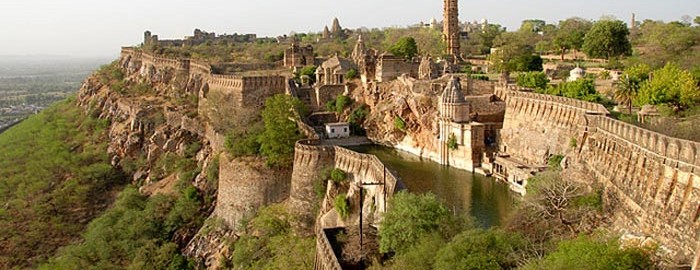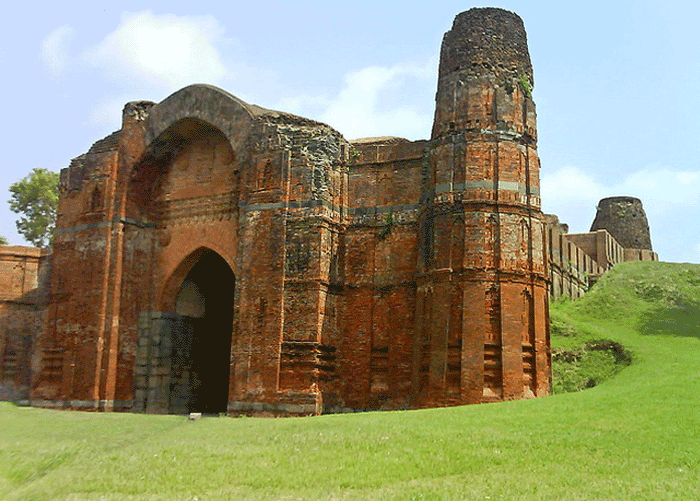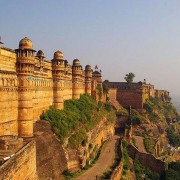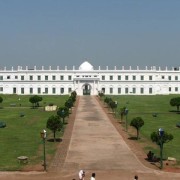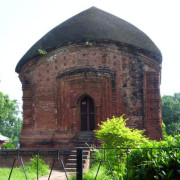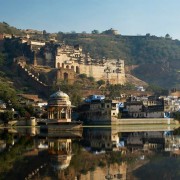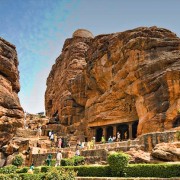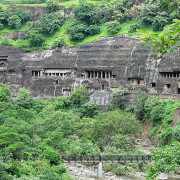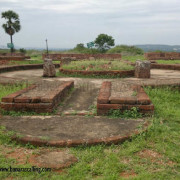Chittorgarh, Rajasthan – A witness to the glorious past of Rajasthan
Chittorgarh is the witness to the glorious history of Rajasthan. The city derives its name from this famous fortress of Chittorgarh. The city of Chittaurgarh is located on the banks of river Gambhiri and Berach. Chittorgarh bears the true characteristics of Chattari Rajput (a Hindu Kshatriya (Warrior) caste) in pride, romance and spirit, for people of Chittor always chose death before surrendering against anyone. It recalls its history of heroism and sacrifice that is evident from the tales still sung by the bards of Rajasthan. Though it can now be called a ruined citadel there is much more to this huge fort. It is a symbol of all that was brave, true and noble in the glorious Rajput tradition.
Places to see at Chittorgarh: There is plenty to see around Chittorgarh.
Chittorgarh Fort
According to the legend the construction of the fort was started by Bhim, a Pandav hero of mythological epic Mahabharata. The fort has many magnificent monuments. Even though the fort mostly is in ruins, it stands as an overwhelming reminder of its past history of triumph and tragedy and its walls resonate with unbelievable legend of extraordinary men and women and their equally astounding deeds.
The fort’s construction is also attributed to 7 AD by the Maurya ruler Chitrangada Mori. It then came to the Sisodiya Rulers of Rajasthan. There are many temples within the fort. There is one devoted to Mira Bai as well. Mira Bai story bears a legend in history.
The other famous spot was the Rani Padmini’s palace and the story of Aladuddin Khilji. The legend goes that Khilji was strongly attracted by the queen’s beauty and he wanted to see her. They show you the mirror in which Khilji was able to see the queen’s image.
Tower of Victory – Vijay Stambh
Built in 1440 AD by Maharana Kumbha to commemorate his victory over Mohamed Khilji, this nine-storey tower is adorned by sculptures of Hindu deities all around. There is a 9 story structure within the fort called the Vijay Stambh (victory pillar) and you can climb it till 8th floor. There are around 157 narrow and dark stairs leading to the terrace. From here the balconies give a beautiful view of the whole town. When illuminated in the evening, the tower presents a breathtaking view. This tower is the piece-de-resistance of Chittaurgarh.
Tower of Fame – Kirthi Stambh
This monument is dedicated to Adinathji, the 1st Jain Tirthankar and it is adorned by the figures of the Digambars. A narrow stairway goes through seven storeys of the tower to the top. The 22 metres high tower was built by a wealthy Jain merchant in 12th century AD.
Gaumukh Reservoir
A deep tank filled by a spring coming from gaumukh or ‘cow’s mouth’, situated at the edge of the cliff. It is considered to be sacred and you can feed fishes.
Ratan Singh Palace
The winter palace, it over looks a small lake and although run down, is an interesting place to explore.
Rana Kumbha Palace
The ruined edifice of great historical and architectural interest, being the most massive monument in the fort of Chittaur. The palace is believed to have underground cellars where Rani Padmini and other women committed Jauhar. Every day in the evening a light and sound show about the history of Chittaurgarh is organized in English and Hindi within this palace complex.
Kumbha Shyam Temple
Built during the reign of Rana Kumbha in the Indo-Aryan style, the temple is associated with the mystic poetess Meerabai – an ardent Krishna devotee. She was the wife of Prince Bhojraj.
Padmini Palace
It is built beside the lotus pool with a pavilion that changed the history of Chittaur. Ala-ud-din Khilji, the Sultan of Delhi, saw the reflection of Queen Padmini from here and got so mesmerized by her beauty, that his quest of possessing her led to a bloody battle which saw Maharana Ratan Singh (husband of Maharani Padmini) fighting the last battle of his life and Padmini committing Johar. The epitome of beauty, the Cleopatra of Rajasthan, became an eternal legend in the history of Chittaur as also of Mewar state.
Kalika Mata Temple
Originally built as a Sun Temple in the 8th century AD, the temple was later converted into Kalika Mata Temple in the 14th century AD. It is dedicated to the mother Goddess Kali- the symbol of power and valour.
Meerabai Temple
The temple where Meerabai worshipped Lord Krishna is built in north Indian style on a raised plinth with a conical roof and beautiful inner sanctum. An open colonnade around the sanctum has four small pavilions in each corner.
Nearby attractions from Chittorgarh: You can make excursions to some spots located nearby Chittor.
Bassi Wildlife Sanctuary
A sanctuary near Bassi, covering an area of 50 Sq km with panthers, wild boars, antelopes, mongoose and migratory birds. The Sanctuary is situated 5 km from the Fort on the western fringes of Vindhyachal Ranges with series of tableland, gentle slopes and vast stretches of large lakes, water channels of which penetrate into the forest. Prior permission has to be obtained from the District Forest Officer, Chittorgarh before visiting the sanctuary.
Haldighati
The historical site of Haldighati, situated towards the south west of Nathdwara, witnessed the great legendary battle fought between Maharana Pratap and the mighty Mughal army in 1576 AD. Here stands a cenotaph with delicate white marble columns, which is dedicated to the indomitable Maharana Pratap’s loyal horse, Chetak.
Things to do at Chittorgarh: There is nothing much to do in Chittorgarh except exploring the crumbling yet glorious Chittorgarh fortress and other tourist destination.
Best time to visit Chittorgarh: Chittorgarh is accessible to tourists for most time of the year. However, the best time to spend a fulfilling holiday in Chittorgarh is during the winter time. At this time of the year, the weather is pleasant and ideal for sightseeing and enjoying the various activities Chittorgarh has to offer.
How to go ?
By Road
Chittorgarh is well connected to all parts of India by roads. The Golden Quardilateral Road Project and North-South-East-West corridor expressways passes through ChittorgarhCity.
By Rail
Chittorgarh railway station is a busy junction of western Indian railways. It has direct rail links with all major north Indian cities including Mumabi, Delhi, Ahmedabad, Ajmer, Udaipur, Jaipur and Kota.
By Air
The nearest airport is Udaipur (Dabok Airport). The airport is located 70 km from Chittorgarh and linked by daily Air Service from New Delhi, Jaipur, Jodhpur, Ahmedabad and Mumbai.
Where to stay ?
There are both government and non government hotels in Chittorgarh.
Hotel Panna: +91-01472- 241 238
Hotel Nandan Palace: +91-01472-243 314
Hotel Meera: +91-01472-240 266 Website: www.hotelmeera.com
Hotel Padmini: +91-01472-241 712 Website: www.hotelpadmini.in
Hotel Amber Plaza: +91-01472-248862
Note : Phone numbers given above are according to the information available with us. If you find any contact number/s given above is/are incorrect or not in use, please let us know.
.

